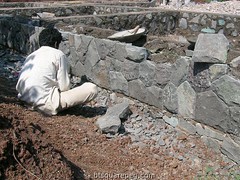I was designing an ovoid conference room the other day and trying to remember the string and pin method of drawing an ellipse because, at some stage, I’ll have to mark it out on site. Headed off to the world’s favourite search engine and after a couple of mis-hits, landed on Math Open Reference which shows a simple animation of how to do it. The site also has tons of other simple geometry stuff. A definite bookmark.
Go to :: Math Open Reference




